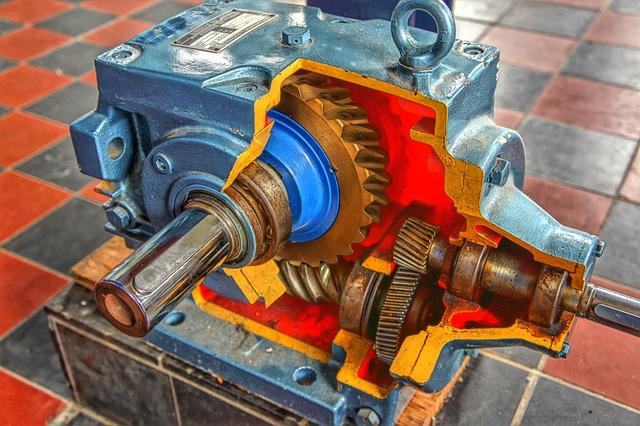Consider These Factors When Selecting a Gearbox
When choosing a gearbox for your machinery, several critical aspects demand your attention. Power, torque, efficiency, and durability are paramount. Your decision directly impacts performance and cost-effectiveness. This guide aims to illuminate the key factors, ensuring your selection not only meets but surpasses expectations. Navigate through this process with us to secure an optimal match for your mechanical needs.
Load Requirements
Understanding load requirements is fundamental when selecting an industrial gearbox, as it directly affects the gearbox's efficiency and longevity. Companies that bought Industrial gearboxes from betech.co.uk understand that it determines the stress placed on the gearbox during operation, influencing its ability to transmit power effectively without undue wear. A gearbox that is not suited to handle the specified load may experience premature failure, resulting in costly downtime and repairs.
By considering both the magnitude and the nature of the load (whether it is constant or variable, and if it involves shock loading), you can ensure the selected gearbox has the appropriate ratings to handle the intended application. This careful matching prevents over-specifying, thus avoiding unnecessary cost, or under-specifying, which compromises system performance and reliability. Ultimately, aligning load requirements with gearbox capabilities is key to optimizing operational efficiency and extending the equipment's service life.
Gear Ratio
The gear ratio is a critical factor in determining an industrial gearbox's performance, as it defines the relationship between the speed of the input shaft and the speed of the output shaft. A well-chosen gear ratio ensures that the machinery operates within its optimal speed range, maximizing efficiency and reducing energy consumption.
Additionally, the correct gear ratio can help in achieving the desired torque, which is crucial for applications requiring heavy lifting or moving substantial loads. Selecting an improper gear ratio could lead to accelerated wear and tear on the gearbox and the driven equipment, potentially leading to early failure and increased maintenance costs. Therefore, carefully considering the gear ratio is essential for ensuring the gearbox meets the specific needs of the application, contributing significantly to the overall performance and longevity of the system.
Environmental Conditions
Whenever you work with such equipment, it's important to consider the environmental conditions in which it will operate. Extreme temperatures, humidity, dust, and other contaminants can significantly impact the performance and lifespan of an industrial gearbox. Here are some things you should pay attention to:
- Temperature
- Humidity
- Dust and particulate matter
- Chemical exposure
- Vibration and shock
- Outdoor exposure
- Noise levels
- Cleanliness requirements
This ensures the unit's ability to withstand extreme temperatures, humidity, dust, and contaminants. This foresight maximizes performance, prevents premature wear, and extends its lifespan, safeguarding operational efficiency and reducing replacement or maintenance costs in challenging or corrosive environments.
Durability and Reliability
These aspects fundamentally determine the gearbox’s life expectancy and its capacity to perform under continuous or strenuous conditions without failure. A durable and reliable gearbox minimizes the risk of operational downtime, which can be costly and disruptive, ensuring consistent productivity and efficiency in industrial processes. It also affects maintenance frequency and costs; more robust gearboxes typically require less frequent repairs and can withstand harsh conditions better.
Ultimately, investing in a gearbox known for its durability and reliability can significantly enhance the overall performance and lifecycle of machinery, resulting in long-term savings and sustained operational stability. This strategic approach avoids the unnecessary expenses and headaches associated with premature equipment failures.
Mounting and Integration
Mounting and integration directly affect the installation process and the gearbox's compatibility with existing machinery. Proper mounting ensures that the gearbox is securely attached to the machinery, preventing misalignment that can lead to excessive wear or even catastrophic failure. Integration is equally important, as the gearbox must seamlessly connect with other system components.
If the gearbox does not integrate well, it may cause inefficiencies in power transmission and operational performance. Taking mounting and integration into account ensures a smooth, efficient setup that optimizes the gearbox's functionality and reliability, minimizing both downtime and maintenance costs.
Maintenance and Serviceability
When selecting an industrial gearbox, considering maintenance and serviceability is crucial for ensuring operational efficiency and durability over time. Gearboxes require periodic maintenance to function optimally, including lubrication, cleaning, and wear part replacement. Opting for a gearbox designed with ease of maintenance in mind can significantly reduce downtime and labor costs.
Furthermore, easy serviceability minimizes the risk of prolonged outages due to complex repair processes or the need for specialized tools. A gearbox that is straightforward to maintain and service ensures not only an extended lifespan but also consistent performance and reliability. This strategic consideration prevents potential operational interruptions and ensures that maintenance activities are less likely to disrupt production schedules, leading to improved overall efficiency and reduced total cost of ownership.
In conclusion, as you select an industrial gearbox, weighing these critical factors ensures you match the right gear to your needs. This careful consideration enhances performance, durability, and operational efficiency, ultimately saving time and money. Let this guide assist you in making an informed decision that secures the longevity and reliability of your machinery.

